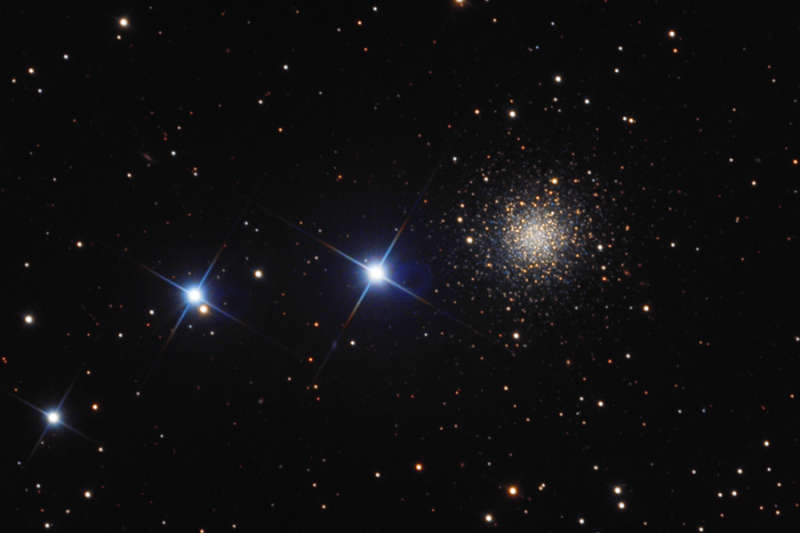Credit & Copyright: Bob Franke
Explanation:
Three objects stand out in
this thoughtful
telescopic image,
a view toward the mostly stealthy constellation
Lynx.
The two brightest (the spiky ones) are nearby stars.
The third is the remote globular star cluster
NGC 2419,
at distance of nearly 300,000 light-years.
NGC 2419 is sometimes
called "the Intergalactic Wanderer",
an appropriate title considering that the distance to
the Milky Way's satellite galaxy, the
Large Magellanic Cloud, is only
about 160,000 light-years.
Roughly similar to other large globular star clusters like
Omega Centauri, NGC 2419
is itself intrinsically bright, but appears faint because
it is so far away.
NGC 2419 may really
have an extragalactic origin as,
for example, the remains of a small galaxy
captured and disrupted by the Milky Way.
But its extreme distance makes it difficult to
study
and compare its properties with other
globular clusters that roam the halo of
our Milky Way galaxy.
1999 2000 2001 2002 2003 2004 2005 2006 2007 2008 2009 2010 2011 2012 2013 2014 2015 2016 2017 2018 2019 2020 2021 2022 2023 2024 2025 |
Yanvar' Fevral' Mart Aprel' Mai Iyun' Iyul' Avgust Sentyabr' Oktyabr' Noyabr' Dekabr' |
NASA Web Site Statements, Warnings, and Disclaimers
NASA Official: Jay Norris. Specific rights apply.
A service of: LHEA at NASA / GSFC
& Michigan Tech. U.
|
Publikacii s klyuchevymi slovami:
Sharovoe skoplenie
Publikacii so slovami: Sharovoe skoplenie | |
Sm. takzhe:
Vse publikacii na tu zhe temu >> | |
